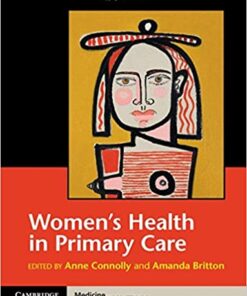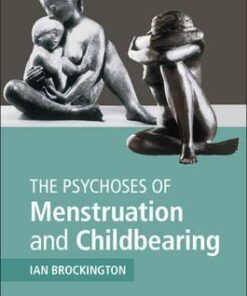Understanding the Basics of General Gynecology: What You Need to Know
Get the Best Care for Your Gynecological Health
Are you looking for the best care for your gynecological health? Look no further than general gynecology. General gynecology is a branch of medicine that focuses on the female reproductive system and its associated disorders. It includes diagnosis, treatment, and prevention of diseases and conditions related to the female reproductive organs. From routine check-ups to more complex procedures, general gynecology can provide comprehensive care for women of all ages. At general gynecology clinics, you can expect to receive personalized care from experienced professionals. They will take the time to understand your individual needs and develop a plan of care tailored to your specific situation. Whether you need a routine exam or a more specialized procedure, they will be able to provide the highest quality of care. If you’re looking for more information about general gynecology, visit DentalBooks.net. Here, you can find detailed information about the different types of services offered by general gynecology clinics, as well as tips and advice on how to get the most out of your visits. With the right knowledge and care, you can ensure that your gynecological health is in the best possible condition.
GENERAL GYNECOLOGY
GENERAL GYNECOLOGY
The Johns Hopkins Manual of Gynecology and Obstetrics, 6th Edition (Original PDF from Publisher)
GENERAL GYNECOLOGY
GENERAL GYNECOLOGY
Telephone Triage for Obstetrics & Gynecology 3rd Edition PDF
GENERAL GYNECOLOGY
GENERAL GYNECOLOGY
Women’s Health in Autoimmune Diseases 1st ed. 2020 Edition PDF
GENERAL GYNECOLOGY
GENERAL GYNECOLOGY
Sleep Disorders in Women: A Guide to Practical Management 3rd ed. 2020 Edition PDF
GENERAL GYNECOLOGY
Sarcomas of Bone and Soft Tissues in Children and Adolescents 1st ed. 2021 Edition PDF
GENERAL GYNECOLOGY
Gynecology: A CREOG and Board Exam Review 1st ed. 2020 Edition PDF
GENERAL GYNECOLOGY
GENERAL GYNECOLOGY
Burnout in Women Physicians: Prevention, Treatment, and Management 1st ed. 2020 Edition PDF
GENERAL GYNECOLOGY
Clinical Management of Bowel Endometriosis: From Diagnosis to Treatment 1st ed. 2020 Edition PDF
GENERAL GYNECOLOGY
GENERAL GYNECOLOGY
GENERAL GYNECOLOGY
GENERAL GYNECOLOGY
GENERAL GYNECOLOGY
GENERAL GYNECOLOGY
GENERAL GYNECOLOGY
GENERAL GYNECOLOGY
GENERAL GYNECOLOGY
Basic Practical Skills in Obstetrics and Gynaecology: Participant Manual 3rd Edition PDF
GENERAL GYNECOLOGY
Principles and Practice of Assisted Reproductive Technology (3 Volumes): Three Volume Set PDF
GENERAL GYNECOLOGY
GENERAL GYNECOLOGY
Women’s Mental Health: A Clinical and Evidence-Based Guide 1st ed. 2020 Edition PDF
GENERAL GYNECOLOGY
GENERAL GYNECOLOGY
Abnormal Female Puberty: A Clinical Casebook 1st ed. 2016 Edition
GENERAL GYNECOLOGY
Handbook of Consult and Inpatient Gynecology 1st ed. 2016 Edition
Introduction
Understanding the basics of general gynecology is essential for women of all ages. From puberty to menopause, gynecological health is an important part of overall wellness. This guide will provide you with the information you need to understand the basics of general gynecology and how it affects your health. We'll cover topics such as common gynecological conditions, preventive care, and treatments. With this knowledge, you can make informed decisions about your gynecological health and ensure that you are receiving the best care possible.
Anatomy and Physiology of the Female Reproductive System
The female reproductive system is a complex and intricate network of organs, hormones, and other components that work together to produce and transport eggs, receive sperm, and create an environment for fertilization and development of offspring. It is composed of both internal and external structures, including the uterus, ovaries, fallopian tubes, cervix, vagina, vulva, and mammary glands.
The uterus is a hollow, pear-shaped organ located in the lower abdomen between the bladder and rectum. It is made up of two layers: the inner lining, called the endometrium, and the outer layer, called the myometrium. The endometrium thickens each month in preparation for a possible pregnancy. If fertilization does not occur, the endometrium is shed during menstruation. The myometrium is composed of smooth muscle tissue and helps to contract during labor and delivery.
The ovaries are two small, almond-shaped organs located on either side of the uterus. They produce and store eggs, as well as the hormones estrogen and progesterone. Estrogen is responsible for the development of secondary sexual characteristics such as breast growth and body shape, while progesterone prepares the uterus for pregnancy.
The fallopian tubes are two thin tubes that connect the ovaries to the uterus. They carry the egg from the ovary to the uterus. Fertilization usually occurs in the fallopian tube, after which the fertilized egg travels to the uterus for implantation.
The cervix is the lower part of the uterus that opens into the vagina. It produces mucus that helps to protect the uterus from infection and also helps to transport sperm to the uterus. During childbirth, the cervix dilates to allow the baby to pass through.
The vagina is a muscular canal that connects the uterus to the outside of the body. It is where menstrual blood exits the body and where sperm enters during intercourse. It also serves as the birth canal during childbirth.
The vulva is the external genitalia of the female reproductive system. It includes the labia majora (outer lips), labia minora (inner lips), clitoris, urethra, and Bartholin’s glands. The labia majora and labia minora protect the internal reproductive organs and provide lubrication during intercourse. The clitoris is a sensitive organ located at the top of the vulva that is involved in sexual pleasure. The urethra is a tube that carries urine from the bladder to the outside of the body. The Bartholin’s glands are two small glands located near the opening of the vagina that secrete a fluid to lubricate the vagina during intercourse.
The mammary glands are located in the breasts and are responsible for producing milk for breastfeeding. They are composed of glandular, fatty, and fibrous tissue and are regulated by hormones.
The female reproductive system is a complex and delicate system that works together to produce and transport eggs, receive sperm, and create an environment for fertilization and development of offspring. It is essential for reproduction and maintaining the health of women.
Common Gynecological Conditions and Treatments
Gynecological conditions are a broad range of medical issues that affect the female reproductive system. These conditions can range from minor to severe and can have a significant impact on a woman’s quality of life. Common gynecological conditions include endometriosis, uterine fibroids, ovarian cysts, pelvic inflammatory disease (PID), and cervical cancer.
Endometriosis is a condition in which tissue similar to the lining of the uterus grows outside of the uterus. This tissue can cause pain, heavy menstrual bleeding, and infertility. Treatment for endometriosis typically involves medications such as hormonal birth control or nonsteroidal anti-inflammatory drugs (NSAIDs) to reduce pain and inflammation. Surgery may also be recommended to remove the endometrial tissue.
Uterine fibroids are noncancerous growths that develop in the uterus. They can cause heavy menstrual bleeding, pelvic pain, and pressure on the bladder or rectum. Treatment for uterine fibroids depends on the size and location of the fibroids. Medications such as hormonal birth control or NSAIDs can help reduce symptoms. In some cases, surgery may be necessary to remove the fibroids.
Ovarian cysts are fluid-filled sacs that form on the ovaries. They can cause abdominal pain, bloating, and irregular menstrual cycles. Treatment for ovarian cysts usually involves medications such as birth control pills or NSAIDs to reduce pain and inflammation. Surgery may be necessary to remove the cyst if it is large or causing other complications.
Pelvic inflammatory disease (PID) is an infection of the reproductive organs caused by bacteria. It can cause pain, fever, and abnormal vaginal discharge. Treatment for PID typically involves antibiotics to clear the infection. In some cases, surgery may be necessary to remove any damaged tissue.
Cervical cancer is a type of cancer that affects the cells of the cervix. It can cause abnormal vaginal bleeding, pelvic pain, and pain during intercourse. Treatment for cervical cancer depends on the stage of the cancer and may involve surgery, radiation therapy, chemotherapy, or a combination of these treatments.
No matter what type of gynecological condition you may be facing, it is important to seek treatment from a qualified healthcare provider. Early diagnosis and treatment can help reduce the risk of serious complications and improve your quality of life.
The Role of the Gynecologist in Women’s Health Care
The role of the gynecologist in women’s health care is an important one. Gynecologists are medical doctors who specialize in the diagnosis and treatment of diseases and disorders related to the female reproductive system. They provide comprehensive care for women throughout their lives, from adolescence through menopause.
Gynecologists are responsible for performing physical exams, ordering tests, and providing preventive care. During a physical exam, they will check the patient’s breasts, abdomen, and pelvic area for any abnormalities. They may also perform Pap smears and other tests to screen for sexually transmitted infections (STIs) and cervical cancer. Gynecologists can also provide advice on contraception, fertility, and menopause.
Gynecologists are also trained to diagnose and treat a variety of conditions that affect the female reproductive system. These include endometriosis, ovarian cysts, uterine fibroids, and pelvic inflammatory disease. They can also help with issues such as infertility, menstrual irregularities, and abnormal bleeding. In addition, they can provide counseling and support for women dealing with issues such as postpartum depression or sexual abuse.
Gynecologists play an important role in helping women maintain their overall health and well-being. They can provide education about healthy lifestyle choices, such as diet and exercise, and can refer patients to other specialists if needed. They can also provide emotional support and guidance during difficult times.
In short, gynecologists are essential to women’s health care. They provide comprehensive care for women throughout their lives, from adolescence through menopause. They are trained to diagnose and treat a variety of conditions that affect the female reproductive system, and can provide education and support for women dealing with issues such as postpartum depression or sexual abuse. By providing these services, gynecologists help ensure that women receive the best possible care.
Screening Tests for Women’s Health
Screening tests for women’s health are important for detecting potential health issues before they become serious. These tests can help identify diseases and conditions that may not have any symptoms, allowing for early diagnosis and treatment. Screening tests can also help detect risk factors for certain diseases, such as high blood pressure or diabetes.
The most common screening tests for women’s health include mammograms, Pap smears, and pelvic exams. Mammograms are used to detect breast cancer in women over the age of 40. During a mammogram, an X-ray is taken of the breasts to look for any abnormalities. Pap smears are used to detect cervical cancer in women between the ages of 21 and 65. During a Pap smear, cells from the cervix are collected and examined for any signs of abnormal cell growth. Pelvic exams are used to check for any signs of infection or other problems in the reproductive organs.
Other screening tests for women’s health include bone density tests, cholesterol tests, and blood pressure checks. Bone density tests measure the strength of bones and can help detect osteoporosis. Cholesterol tests measure the levels of good and bad cholesterol in the blood and can help detect heart disease. Blood pressure checks measure the pressure of the blood against the walls of the arteries and can help detect hypertension.
It is important for women to get regular screenings for their health. Depending on age and risk factors, these tests should be done at least once a year. Women should talk to their doctor about which tests are right for them and how often they should be done. Early detection of health issues can help prevent more serious complications down the road.
Menopause: Symptoms, Diagnosis, and Treatment Options
Conclusion
Understanding the basics of general gynecology is essential for women to maintain their reproductive health. From understanding the anatomy and physiology of the female reproductive system, to recognizing common symptoms and treatments, having a basic knowledge of gynecology can help women make informed decisions about their health. With the help of a qualified gynecologist, women can ensure that they are receiving the best care possible.





























